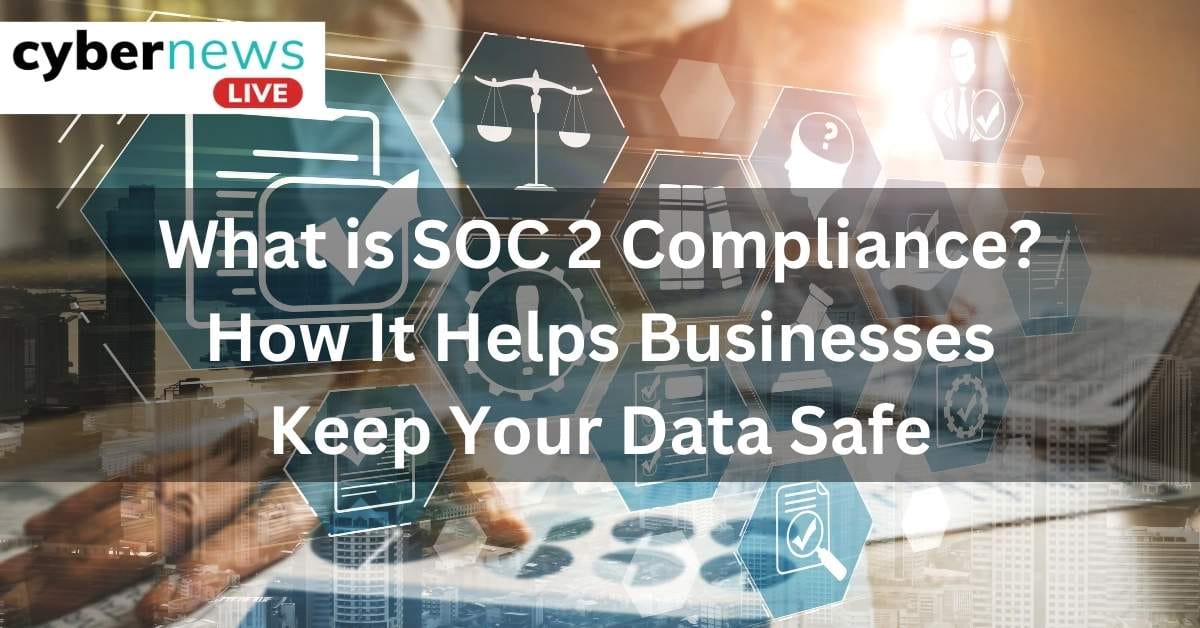
What is SOC 2 Compliance? How It Helps Businesses Keep Your Data Safe
System and Organisation Controls (SOC) 2 compliance refers to a voluntary framework for service organisations, established by the American Institute of Certified Public Accountants (AICPA). The framework outlines how organisations should manage and protect customer data from unauthorised access and security vulnerabilities. SOC 2 is based on five trust services criteria, namely security, availability, processing integrity, confidentiality, and privacy.
The purpose of SOC 2 compliance is to assure customers and stakeholders that an organisation is adhering to industry-standard practices for managing and securing data. A SOC 2 report is customised to reflect the specific needs and business practices of an organisation, allowing it to implement controls that align with one or more of the trust services criteria.
Let’s understand the five trust service criteria of SOC 2 compliance in detail.
Trust Services Principles of SOC 2 Compliance
Security
The Security principle focuses on the protection of system resources from unauthorised access, ensuring that systems and data are safeguarded against potential threats, such as misuse, theft, and alteration. Robust security measures aim to prevent the unauthorised acquisition, disclosure, or destruction of sensitive information.
Availability
The Availability principle ensures systems, products, and services stay accessible as outlined in contracts or SLAs. It emphasizes system uptime, with any downtime communicated transparently and handled per agreed metrics. Key components include network performance monitoring, disaster recovery protocols, site failover plans, and effective incident response.
Processing Integrity
Processing integrity ensures that a system accurately processes data, delivering it in a valid, timely, and authorised manner. The system must produce the correct output based on the inputs provided. While processing integrity does not guarantee the accuracy of the data input into the system, organisations must implement monitoring and quality assurance procedures to verify that data is processed as intended, without errors or unauthorised alterations.
Confidentiality
The Confidentiality principle emphasises the protection of sensitive information from unauthorised access or disclosure. Data classified as confidential (e.g., intellectual property, trade secrets, business strategies) must be securely handled and kept private. Common methods to enforce confidentiality include encryption, access restrictions, and secure data disposal protocols. Confidentiality extends to ensuring that information remains protected across various stages, from storage to transmission, in line with privacy regulations and company policies.
Privacy
The Privacy principle is concerned with how an organisation collects, processes, retains, and discloses personal information in compliance with privacy laws and the organisation’s privacy policies. Personal data refers to Personally Identifiable Information (PII) that can be used to distinguish an individual (e.g., names, contact details, Social Security numbers). To meet privacy requirements, organisations must demonstrate their adherence to regulatory frameworks such as the General Data Protection Regulation (GDPR) or the California Consumer Privacy Act (CCPA), as well as best practices outlined in frameworks like the AICPA’s Generally Accepted Privacy Principles (GAPP).
Importance of SOC 2 Compliance
Enhanced Operational Visibility
SOC 2 compliance offers organisations greater transparency into daily operations, ensuring active monitoring of security measures and proper documentation of system configurations. This regular monitoring helps businesses detect malicious or unauthorised activity, including unusual system changes and user access levels. This regular monitoring helps businesses detect malicious or unauthorised activity, including unusual system changes and user access levels.
Improved Security Posture
Implementing SOC 2 security controls gives organizations valuable insights into their security posture and reveals areas for improvement. The SOC 2 certification process helps companies identify where sensitive data is stored and set up strong protections. For SaaS companies, maintaining SOC 2 compliance strengthens their ability to manage risk and secure data against rising cyber threats.
Risk Mitigation and Data Protection
Through SOC 2 compliance, organisations gain a comprehensive understanding of their security risks and vulnerabilities. The audit process provides a clear roadmap for addressing these risks, with policies, procedures, and controls tailored to safeguard data. For example, organisations can deploy risk assessments and data protection policies to minimise unauthorised data access. Regular reviews of internal security protocols help maintain resilience against emerging threats. This is critical as cyber attacks become more frequent and sophisticated.
Streamlined Auditing Process and Continuous Improvement
SOC 2 compliance necessitates ongoing attention to policies, controls, and security procedures to ensure they remain effective over time. Regular audits and assessments help organisations stay aligned with evolving data protection regulations and industry best practices. Additionally, by leveraging technology to automate the collection of SOC 2 evidence, the audit process becomes more efficient and less burdensome. Automated evidence collection gives you real-time visibility into compliance gaps, allowing your team to address issues before auditors flag them.
Conclusion
SOC 2 compliance is essential for safeguarding sensitive data and managing risks effectively. It builds trust with customers, partners, and stakeholders by demonstrating a commitment to security. By meeting industry standards, organisations enhance their credibility and competitiveness. SOC 2 certification sets companies apart, ensuring they are well-prepared to navigate a data-driven market. Ultimately, it supports long-term growth, operational resilience, and a strong reputation.
Don’t let your organisation fall behind in the ever-evolving landscape of cyber security. Tune into Cyber News Live to stay informed about the latest trends, threats, and best practices for protecting your data and systems.

